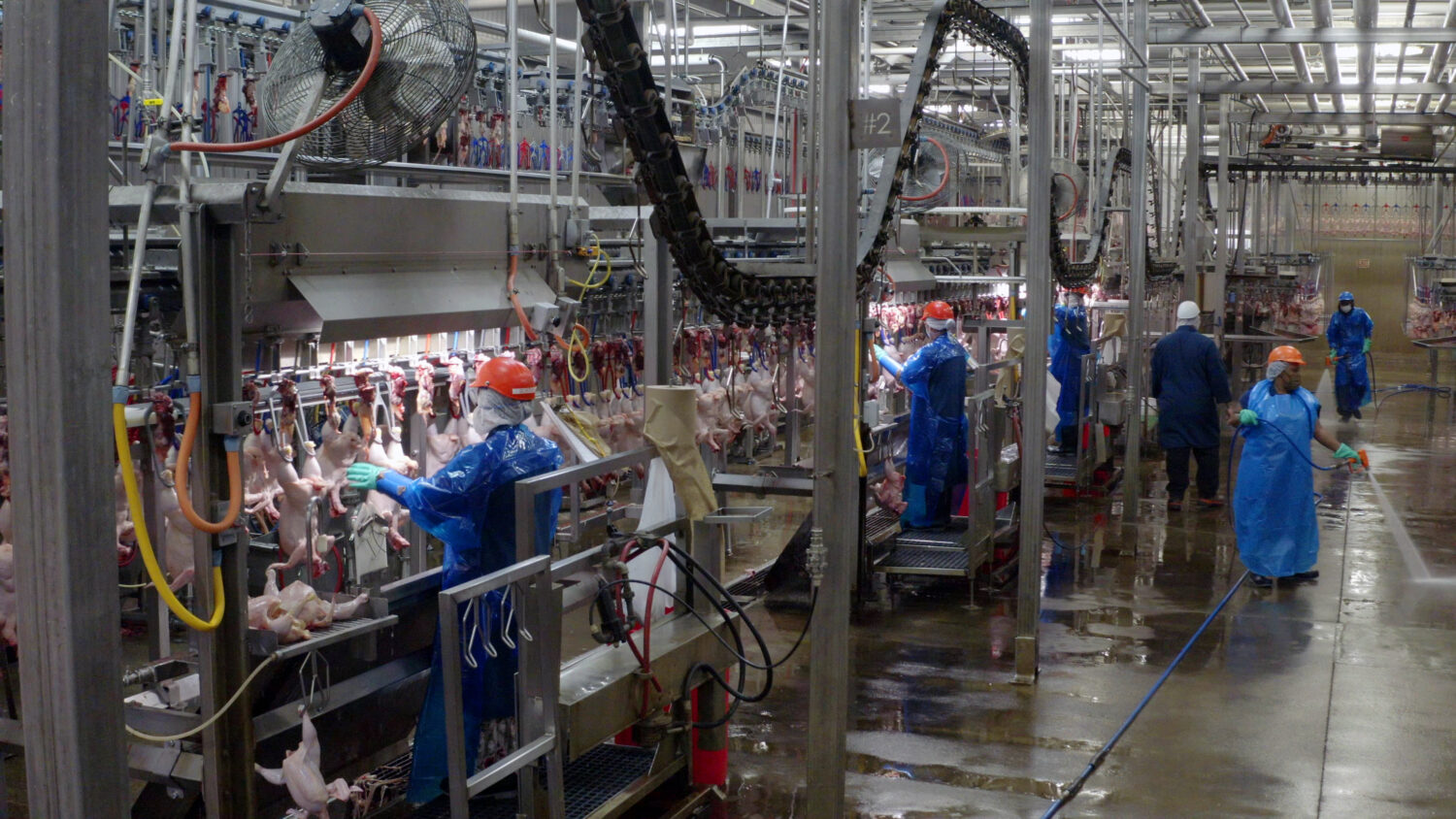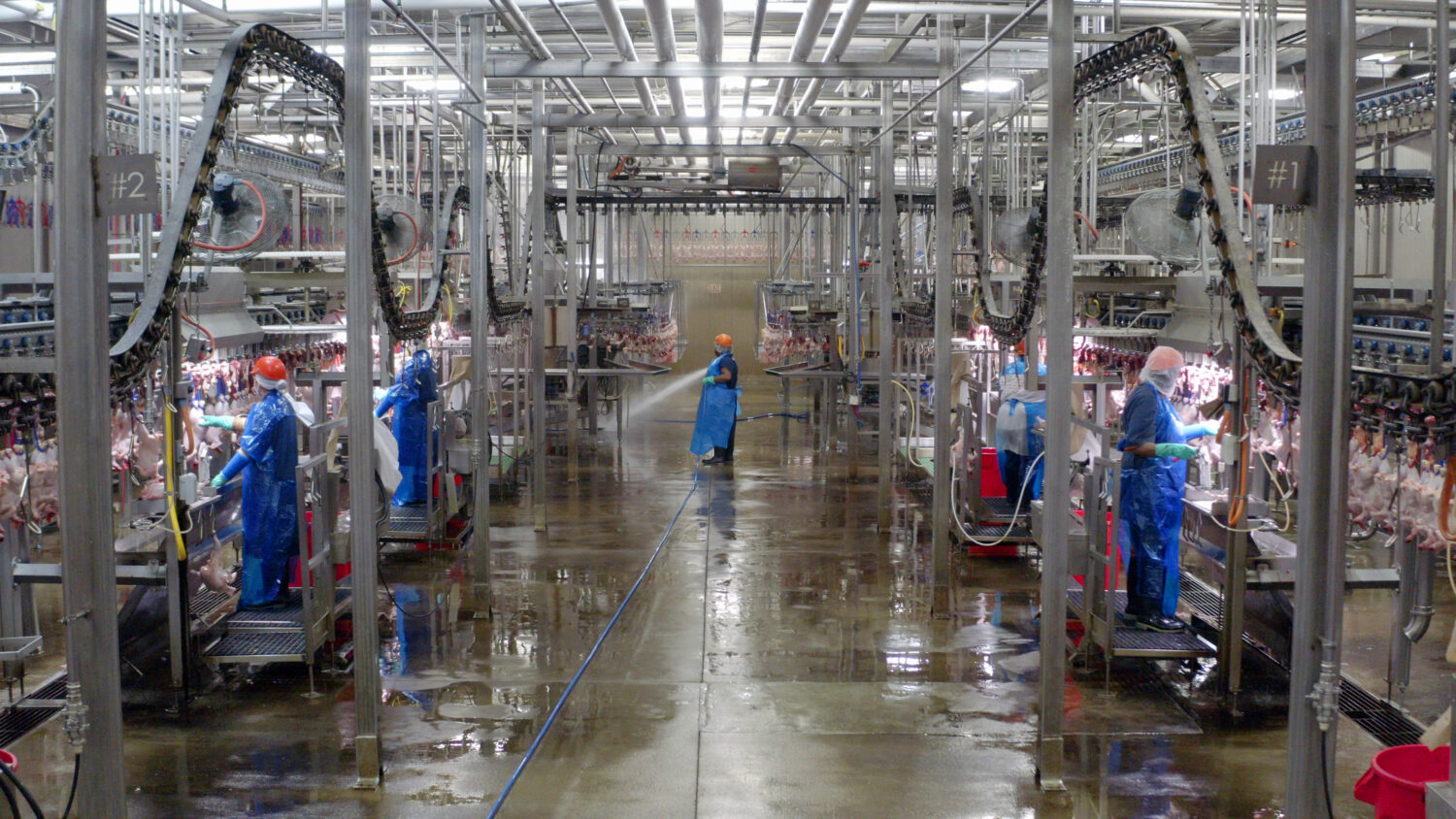Avian Leukosis: What is avian leukosis? Is avian leukosis a food safety concern?
What is avian leukosis?
Avian leukosis belongs to a family of viruses termed “retroviruses.” It is confined to birds and cannot spread to humans or any other species. Like all retroviruses, avian leukosis is relatively weak and does not survive well outside of the bird. The virus impacts the bird’s immunity, and can eventually form lesions on the bird’s internal organs such as the liver or spleen.
How often does avian leukosis occur?
According to the U. S. Department of Agriculture’s (USDA) Food Safety and Inspection Service (FSIS), avian leukosis is a “rare manifestation” in broiler chickens.1 From as early as 1984, avian leukosis was present in only 0.017 percent of young chickens slaughtered.2 That number is less than 0.001% today, or one-one thousandth of one percent.
Nearly all birds are vaccinated against the sources of avian leukosis. Along with vaccine pressure, modern breeding practices and biosecurity have effectively eliminated the virus from commercial broiler and breeder flocks.
Is avian leukosis a food safety concern? Can it make someone sick?
USDA’s FSIS and other health agencies have recognized avian leukosis “is not transmissible to humans” and “does not present a human health concern,” a fact the agency has acknowledged since at least 1997.3 The viruses that cause leukosis are species-specific and cannot be transmitted to humans. The National Institutes of Health (NIH) has declared these viruses are not “associated with disease in adult humans.”4 Comprehensive literature reviews of the viruses that cause leukosis have also concluded that there is no apparent risk to public health.5
In the rare occurrence avian leukosis is found on a chicken liver or spleen, are the other parts of the bird, like the breast or wings, affected?
No. In the extremely rare occasion that these lesions may occur, they are easily found on the bird’s organs, such as the liver or the spleen, and the organs are discarded. The disease is local and not systemic, meaning it is confined to the organ and does not spread to other parts of the bird.
A Change in Regulations
In March of 2019, the National Chicken Council petitioned FSIS to vacate prior avian leukosis condemnation regulations because the disease does not impact the whole chicken – it only impacts a specific part of the chicken. In July of 2020, because of overwhelming scientific evidence (?), FSIS granted the petition and in March 14, 2022 FSIS published a proposed rule in the Federal Register.
In August 2023, FSIS finalized the proposed rule. It allows for the removal of extremely rare lesions suspected to be caused by avian leukosis from the bird during processing. The rule no longer requires the whole chicken to be discarded, thus reducing food waste. This became effective September 18, 2023.
Amending the current regulations was scientifically supported by public health and agency scientists for reasons such as:
- Avian leukosis does not present a food-safety risk
- Avian leukosis cannot infect humans
- Modern understandings of the avian disease are much more advanced than when FSIS first developed its policy
- Leukosis is not a systemic disease
- Modern vaccination and breeding programs have all but eliminated avian leukosis
Does this mean USDA inspectors will no longer be inspecting chickens for avian leukosis?
No. There are and still will be FSIS inspectors on every production line inspecting each carcass after it has been cleaned, inspected, and trimmed, if necessary, by company employees. Company employees are already trained to look for, and eliminate, lesions, bruises, etc. on carcasses all of which are quality issues and pose no food safety concerns. FSIS inspectors are the final check before the carcasses can move further through the process. By law, a plant cannot operate without FSIS inspectors present and inspecting each carcass before receiving the USDA seal for wholesomeness.


Do increased line speeds in poultry plants increase the risk of avian leukosis?
No. Company employees on the evisceration line are trained to look for and eliminate lesions, bruises, etc. on carcasses as they are quality issues and pose no food safety concerns. In the .0001% chance avian leukosis is present on a carcass, these employees are trained to identify it, no matter what speed the line is operating.
There are also FSIS inspectors on every production line inspecting every carcass after they are cleaned, inspected, and trimmed, if necessary, by company employees. FSIS inspectors are the final check before the carcasses can move further through the process. By law, a plant cannot operate without FSIS inspectors present and inspecting each carcass before receiving the USDA seal for wholesomeness.
Using current science and technology, companies have been safely operating evisceration lines of up to 175 birds per minute for more than two decades while producing safe, wholesome chicken.
For more information on poultry line speeds, please click here.
What are the benefits to consumers of the National Chicken Council’s petition?
To learn more about avian leukosis and the National Chicken Council’s petition, watch this video featuring Ashley Peterson, senior vice president, scientific and regulatory affairs for the National Chicken Council.
(1) Modernization of Poultry Slaughter Inspection; Proposed Rule, 77 Fed. Reg. 4408, 4422 (Jan. 27, 2012).
(2) Id. at 4421.
(3) Id. at 4421–22.
(4) National Institutes of Health, NIH Guidelines for Research Involving Recombinant DNA Molecules 44, app’x B.V (Oct. 2011).
(5) H.G. Purchase and R.L. Witter, Public Health Concerns From Human Exposure to Oncogenice Avian Herpesvirus, 189 J. Am. Vet. Med. Ass’n 1430 (1986); E.S. Johnson, Poultry Oncogenic Retroviruses and Humans, 18 Cancer Detection & Prevention 9 (1994); K.A. Schat and H.N. Erb, Lack of Evidence That Avian Oncogenic Viruses Are Infectious for Humans: A Review, 58:345-358 Avian Diseases (2014); K.A. Schat, History of the First-Generation Marek’s Disease Vaccines: The Science and Little-Known Facts, 60:715-724 Avian Diseases (2016).
